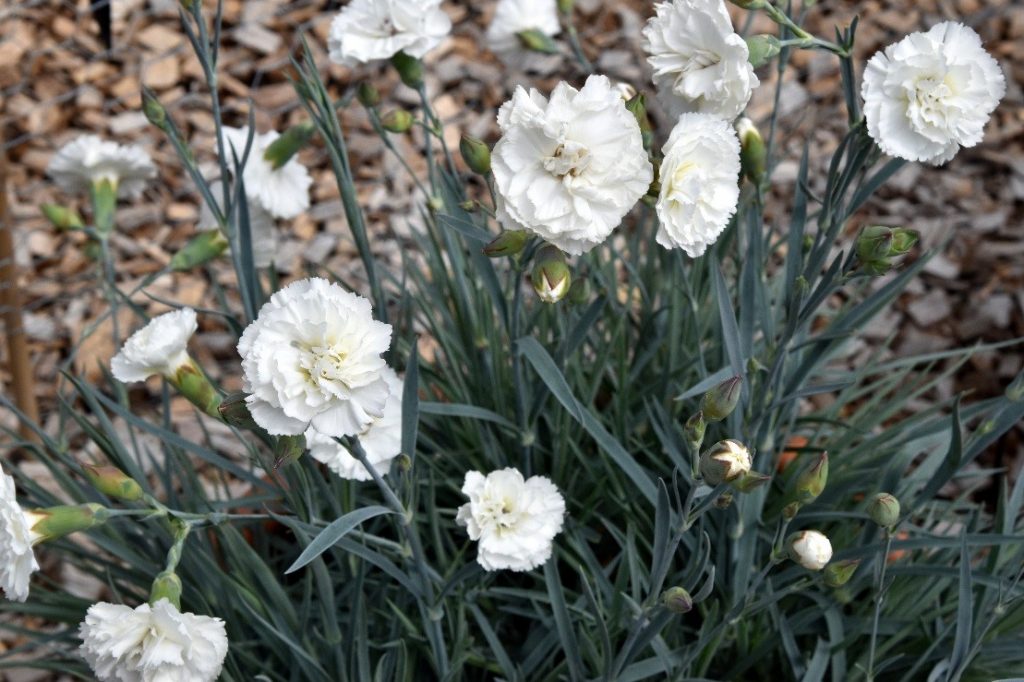Editor’s note: For the first time we have a plant so popular that two different institutions have offered a blog on it. They take a different approach so here you have both: one from Manchester Museum, the other from the RHS Garden Wisley. I have enjoyed reading both, I hope you will too.
A very festive and minty Christmas with Wintergreen
By Rachel Webster and Sophie Mogg

It’s always a joy to see something growing through these dark and dreary winter months. With glossy, green leaves, little cream bell-like flowers and big, red berries that start to appear as the snow melts, today’s plant, Gaultheria procumbens, is a very popular choice for baskets and containers. The name of this plant originates from Pehr Kalm, a Swedish explorer who named this plant after his good friend, Dr. Hugues Gaultier who expressed huge enthusiasm for the plants potential for tea.
For the first blog you can read more at Herbology Manchester.
Now for the blog from RHS Wisley staff
Wintergreen
By Saskia Harris
RHS Garden Wisley, Woking, Surrey, GU23 6QB
In November, in a hurry to find plants for a Kokedama “Moss ball” Christmas decorating project, I grabbed the nearest thing that looked green and had red berries, a tray of the shrub Gaultheria procumbens, the ideal plant to banish the aches and pains encountered over the Christmas period.
This useful exotic member of the family Ericaceae is commonly known in America as Wintergreen or Checkerberry, the most common of the North American species of the genus Gaultheria, which remain evergreen. It produces small waxy white flowers followed by decorative red berries and has a creeping ‘winter green’ habit (hence the name). It is a useful smothering groundcover plant which tolerates shaded surroundings.
In Great Britain the local plants which spring to mind called ‘Wintergreens’ belong in the genera Pyrola L., Orthilla Raf. and Moneses Salisb. Ex Gray. They are short evergreen herbs with white flowers which in the past belonged to a family of their own, Pyrolaceae, but are now from part of the Ericaceae. (Stace, 2010).
Uses
Medicinal
As alluded to above, wintergreen is renowned for its medicinal properties. It contains large quantities of the aromatic compound, methyl salicylate along with a few other components, which produce a medicinal, minty fragrance when crushed and/or extracted as an oil. All parts of the plant are aromatic, but it is the leaves that yield the oil and it is this that is used in the manufacture of the essential oil.
According to the Gale Encyclopaedia of Alternative Medicine other names by which the plants are known include boxberry, Canada tea, deerberry, ground berry, mountain tea, partridgeberry, spice berry, teaberry, and wax cluster. Some of these names indicate the uses to which the plants can be put. In North America wintergreen is used as a medicinal and refreshing tea by East Canadian Aboriginals, and it provides cover for game.
 Wintergreen and its oil have been used aromatherapeutically and medicinally as a topical analgesic and in rubefacient (warming and reddening) preparations to treat minor aches and sprains, muscular and rheumatic pain.
Wintergreen and its oil have been used aromatherapeutically and medicinally as a topical analgesic and in rubefacient (warming and reddening) preparations to treat minor aches and sprains, muscular and rheumatic pain.
Use of Wintergreen comes with some warnings as there are toxicity concerns: 1 teaspoon (5 mL) of wintergreen oil is equivalent to approximately 7000 mg of salicylate or 21.5 adult aspirin tablets. Wintergreen oil can induce vomiting, and in some cases, death. Use is best avoided in children, patients with known hypersensitivity to the oil, and patients with asthma, known salicylate allergy, GI irritation or inflammation.
Although mostly known from Gaultheria procumbens, wintergreen can also be extracted from the birch, Betula lenta (Mabberley, 2008).
Industrial
Wintergreen oil is reportedly used in microscopy, printing, degreasing of machinery and against sea rust erosion. (Wiki)
Wintergreen oil together with Rosemary oil is being trialled as a pesticide.
Food additive
 Wintergreen has been used as a common flavouring for American products e.g. root beer, snuff, chewing gum, candy – as an alternative to peppermint and spearmint (Wiki) and has a distinctive fragrance, pleasant to some and anathema to others:
Wintergreen has been used as a common flavouring for American products e.g. root beer, snuff, chewing gum, candy – as an alternative to peppermint and spearmint (Wiki) and has a distinctive fragrance, pleasant to some and anathema to others:
‘…reminds me of germolene. As does root beer – my son loves root beer, it turns my stomach ’ alya on Oct 12, 07 at 4:49am
A Dianthus that smells of wintergreen

At RHS Garden Wisley we collected herbarium specimens from the Dianthus trial (TN2004) this year, making a note regarding the fragrance.
This is a matter of ‘taste’, rather like tasting wine, honey or perfume, not an exact science – staff in close proximity have a blind sniff and add their opinions. Most Dianthus have a spicy, clove scent, but occasionally also ‘a medicinal whiff’. In July 2016 Dianthus ‘Devon Dove’, #17, had ‘a suggestion of Wintergreen/Deep Heat’ (Deep Heat is an application for the relief of muscle pain), which led to a discussion about the components of the fragrance. With the following discretionary comment in mind, ‘No recognised classification of scent has ever been made because there is so great a variation in perfume’ (Genders, 1978), one could hazard a guess that perhaps the essential oil in the Dianthus fragrance has a component of wintergreen in it too?
References:
Cubey, J. (Ed.) 2016 RHS Plant Finder. The Royal Horticultural Society
Genders, Roy. 1978. Scented Flora of the World. An Encyclopaedia. Granada Publishing Limited, p.228
Mabberley, D. J. 2008, 3rd Edition, Mabberley’s Plant Book, Cambridge University Press, p.352
Sanecki , Kay.N 1981.The Fragrant Garden, B.T. Batsford Ltd. p.106
Stace, C. 2010. 3rd Edition. New Flora of the British Isles. Cambridge University Press, pp.534-535
